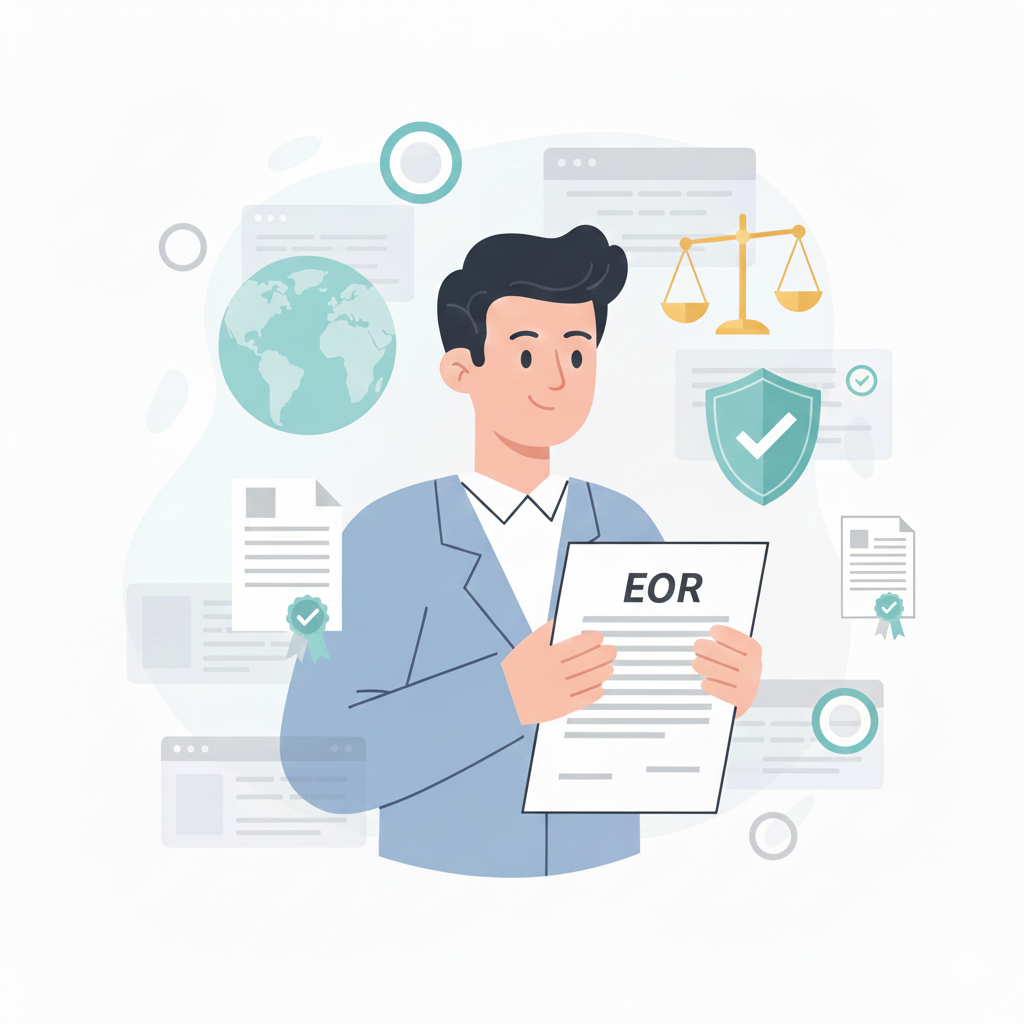Estonia’s digital-first approach and favorable business environment make it an attractive destination for expansion. Payroll management involves navigating local tax and labor laws. Gloroots provides streamlined payroll solutions. Employers hiring in Estonia or through an Employer of Record (EOR) must grasp these regulations to ensure smooth operations.
How is payroll calculated in Estonia?
Payroll is essentially the company's documentation detailing employees and their respective salaries. In Estonia, calculating payroll involves determining the basic salary and adding any applicable allowances and bonuses. The formula for arriving at the net salary is straightforward:
Net Salary = Gross Salary - Deductions
How to set up payroll in Estonia
Establishing a payroll system in Estonia requires a thorough understanding of the local payroll rules and regulations. The following steps outline the process to effectively set up HR payroll in Estonia:
1. File Essential Documents
Begin by filing the Certificate of Registration and the Articles of Association for the parent company with the Estonian authorities. This step ensures that the company is legally recognized and compliant with Estonian laws.
2. Draft New Articles of Association
Prepare new Articles of Association that detail the company’s intended operations in Estonia. This document serves as a blueprint for the company's activities and legal structure within the country.
3. Provide Proof of Registered Address
Submit documentation proving the company’s registered address in Estonia. This step is crucial for establishing the company’s local presence and fulfilling regulatory requirements.
4. Open a Bank Account
Establish a bank account with a local Estonian bank. This account will be used for managing payroll disbursements and other financial transactions necessary for business operations.
5. Register with Local Authorities
Register with the Central Sick Fund of Estonia to comply with health insurance regulations and with the VAT authorities to manage tax obligations. These registrations are essential for legal compliance and the smooth operation of payroll.
6. Recruit Staff
Finally, hire new employees who will be included in the payroll system. This step involves recruiting and onboarding staff, ensuring that all new hires are properly registered and integrated into the payroll system.
Payroll Process in Estonia
Processing payroll in Estonia involves several crucial steps to ensure compliance with local regulations and the accurate payment of employees. Here’s a detailed guide to help companies navigate the payroll process:
1. Select a Payroll System
Begin by choosing the most suitable payroll system for the company’s needs. Options include manual processing, using payroll software, or outsourcing payroll management to a specialized firm. Outsourcing can be a cost-effective solution, especially for businesses looking to minimize administrative burdens.
2. Create a Payroll Policy
Develop comprehensive payroll policies and procedures that outline important details such as pay dates, payment methods, and compliance requirements. In Estonia, it is mandatory for companies to disburse employee salaries on the last working day of the month, so this must be clearly defined in the policy.
3. Gather Employee Information
Collect detailed information for each employee, including tax withholding details, start dates, and other relevant data. This information must be uploaded to the payroll system to facilitate accurate payroll processing.
4. Implement Time-Tracking
Establish a reliable system for tracking employee work hours. This is essential for calculating payroll accurately. Collect and verify timesheets, and ensure that all tracked time is correctly imported into the payroll system.
5. Calculate Salaries
The financial team is responsible for calculating the gross salary for each employee. This includes accounting for leaves, holidays, overtime, and any additional allowances. It’s important to note that the Estonian Tax and Customs Board requires employers to deduct 20% income tax from employees' salaries, which must be factored into the calculations.
6. Settle Payments
The payroll process culminates in the timely payment of salaries to employees. Prompt settlement of payments is crucial to avoid any penalties or late fees, ensuring a smooth payroll process.
7. Issue Payslips
Issuing detailed payslips to employees is a mandatory part of payroll processing in Estonia. Payslips should clearly break down the salary components and can be provided in either digital or physical format. This transparency helps in maintaining trust and compliance with payroll regulations.
Payroll Cycle
In Estonia, the payroll cycle typically operates on a monthly basis, with payments required to be made on a consistent date each month, ensuring they are completed by the last working day of the month at the latest.
Payroll Processing
In Estonia, effective payroll processing is essential and involves utilizing advanced tools to ensure compliance and streamline operations. It’s important to manage payroll schedules and accurately calculate wages to guarantee timely payments and reduce legal complications. Proper handling of deductions and benefits not only ensures compliance but also boosts employee retention.
Payroll Management
Managing payroll in Estonia efficiently requires leveraging advanced software for accurate calculations and prompt salary disbursements. Keeping detailed records and staying abreast of local labor laws are critical for maintaining compliance. Implementing robust auditing and using cloud-based systems enhance payroll management, especially for remote workers. Outsourcing payroll or engaging local processing companies provides reliable and compliant solutions, each with unique advantages.
Payroll Components
Minimum Wage
In Estonia, the minimum monthly wage is set at 820 EUR.
Working Hours
In Estonia, a typical work week comprises 40 hours, generally spread over five days with an 8-hour workday.
Overtime
The average working hours in Estonia cannot exceed 48 hours per week over a 4-month period. Overtime must be compensated at 150% of the regular salary or through additional time off.
Social Security
Estonia's social security system requires contributions from both employers and employees to fund pensions, health insurance, and unemployment benefits.
Employer Contributions
Employers in Estonia are obligated to contribute to various social security funds as part of their total employment costs:
- Pension Contribution: Employers contribute 20% of an employee’s salary to the national pension fund.
- Health Insurance: An additional 13% goes toward health insurance, ensuring employees receive essential healthcare coverage.
- Unemployment Insurance: Employers must also contribute 0.8% to unemployment insurance.
In total, these contributions make up 33.8% of the employment cost. There is also a minimum social tax of 239.25 EUR per month, which must be paid even if no salary is disbursed to the employee during that period.
Employee Contributions
Employees contribute to the social security system through deductions from their salaries:
- Unemployment Insurance: Employees pay 1.6% of their salary for unemployment insurance.
- Compulsory Pension: Employees born after December 31, 1982, must contribute 2% of their earnings to a compulsory pension fund.
The total employee contribution ranges from 1.6% to 3.6%, depending on specific pension obligations.
Sick Days
- Employees in Estonia can take up to 182 calendar days of sick leave per year.
- Days 1 to 3 are unpaid.
- Days 4 to 8 are paid by the employer.
- From day 9 to day 182, health insurance covers 70% of the employee's salary.
- The current scheme, which provides payment starting from the second day of sickness, is extended until June 30th, 2023.
Employee Income Tax Rates
20% Flat Rate:
- Up to 654 EUR per month is tax-free, meaning no income tax is deducted.
- The tax-free threshold decreases as total income increases.
- When the annual gross income exceeds 25,200 EUR (or 2,100 EUR per month), the exemption is completely eliminated.
Discover the latest insights on Global Payroll Trends for 2024.
Find the Best Estonia Talent for Your Business Today
To recruit top Estonian talent, target sectors where Estonia shines, such as information technology, digital services, and innovation. Gloroots makes this process effortless by ensuring adherence to local labor laws and providing comprehensive payroll management solutions. Our proficiency in risk mitigation, efficient onboarding, and payroll integration enables businesses to focus on growth while we manage the intricacies of payroll and talent acquisition with ease. Rely on Gloroots to handle these processes expertly, ensuring smooth and effective operations in Estonia.

.webp)




























.webp)

















.webp)
.webp)
%204%20(2).webp)








.webp)
.webp)

